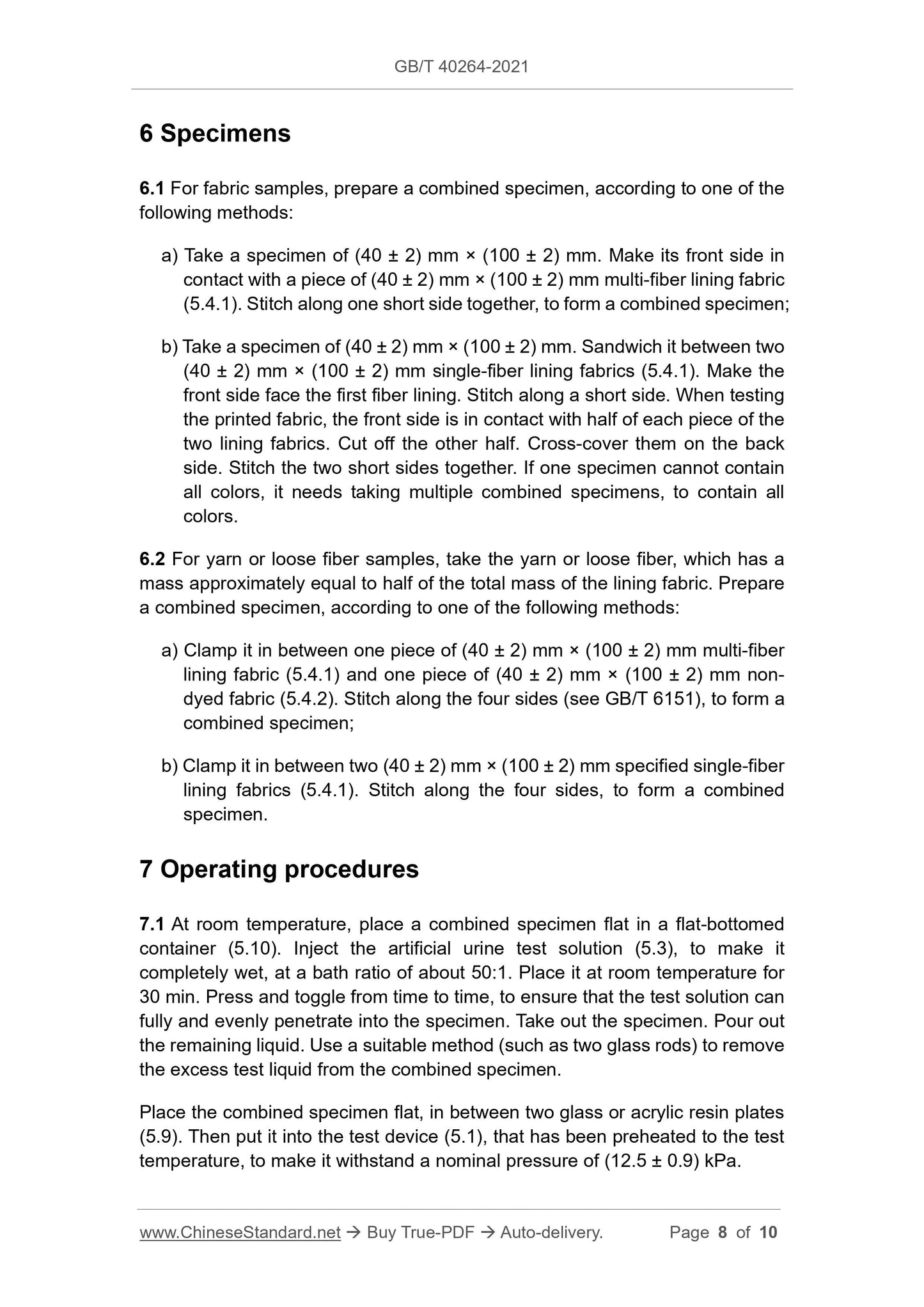1
/
of
5
www.ChineseStandard.us -- Field Test Asia Pte. Ltd.
GB/T 40264-2021 English PDF (GB/T40264-2021)
GB/T 40264-2021 English PDF (GB/T40264-2021)
Regular price
$170.00
Regular price
Sale price
$170.00
Unit price
/
per
Shipping calculated at checkout.
Couldn't load pickup availability
GB/T 40264-2021: Textiles - Tests for colour fastness - Colour fastness to urine
Delivery: 9 seconds. Download (and Email) true-PDF + Invoice.Get Quotation: Click GB/T 40264-2021 (Self-service in 1-minute)
Newer / historical versions: GB/T 40264-2021
Preview True-PDF
Scope
This document specifies the test methods, for determining the color fastness tourine of various textile products.
This document applies to all types of textile products.
Basic Data
| Standard ID | GB/T 40264-2021 (GB/T40264-2021) |
| Description (Translated English) | Textiles - Tests for colour fastness - Colour fastness to urine |
| Sector / Industry | National Standard (Recommended) |
| Classification of Chinese Standard | W04 |
| Word Count Estimation | 10,171 |
| Issuing agency(ies) | State Administration for Market Regulation, China National Standardization Administration |
Share









